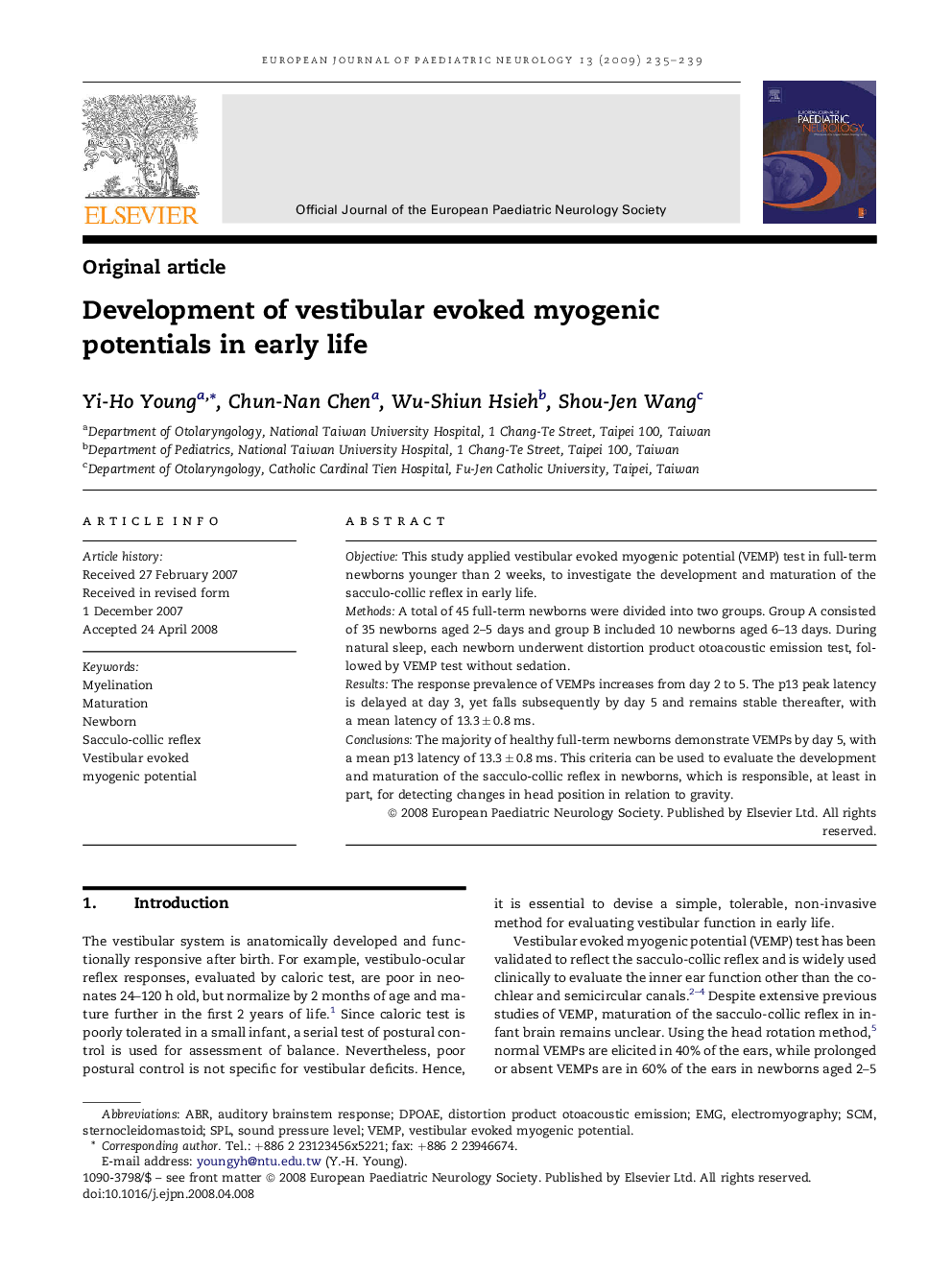| Article ID | Journal | Published Year | Pages | File Type |
|---|---|---|---|---|
| 3054427 | European Journal of Paediatric Neurology | 2009 | 5 Pages |
ObjectiveThis study applied vestibular evoked myogenic potential (VEMP) test in full-term newborns younger than 2 weeks, to investigate the development and maturation of the sacculo-collic reflex in early life.MethodsA total of 45 full-term newborns were divided into two groups. Group A consisted of 35 newborns aged 2–5 days and group B included 10 newborns aged 6–13 days. During natural sleep, each newborn underwent distortion product otoacoustic emission test, followed by VEMP test without sedation.ResultsThe response prevalence of VEMPs increases from day 2 to 5. The p13 peak latency is delayed at day 3, yet falls subsequently by day 5 and remains stable thereafter, with a mean latency of 13.3 ± 0.8 ms.ConclusionsThe majority of healthy full-term newborns demonstrate VEMPs by day 5, with a mean p13 latency of 13.3 ± 0.8 ms. This criteria can be used to evaluate the development and maturation of the sacculo-collic reflex in newborns, which is responsible, at least in part, for detecting changes in head position in relation to gravity.
